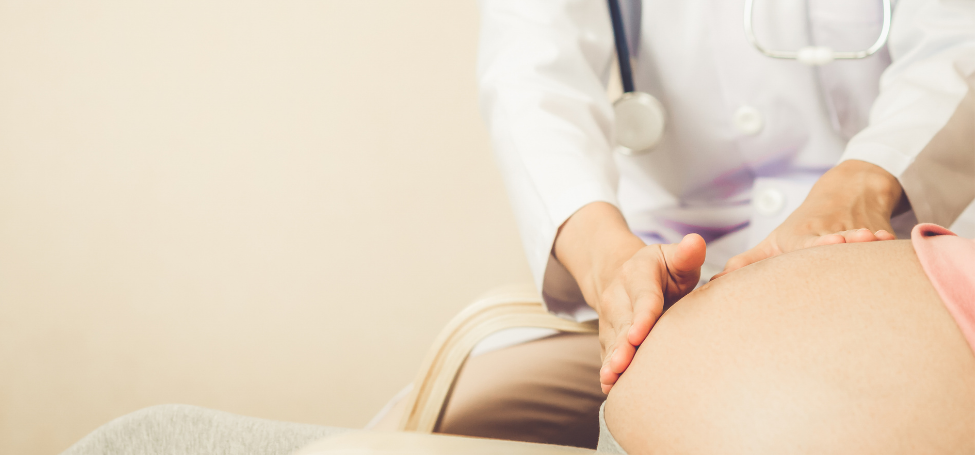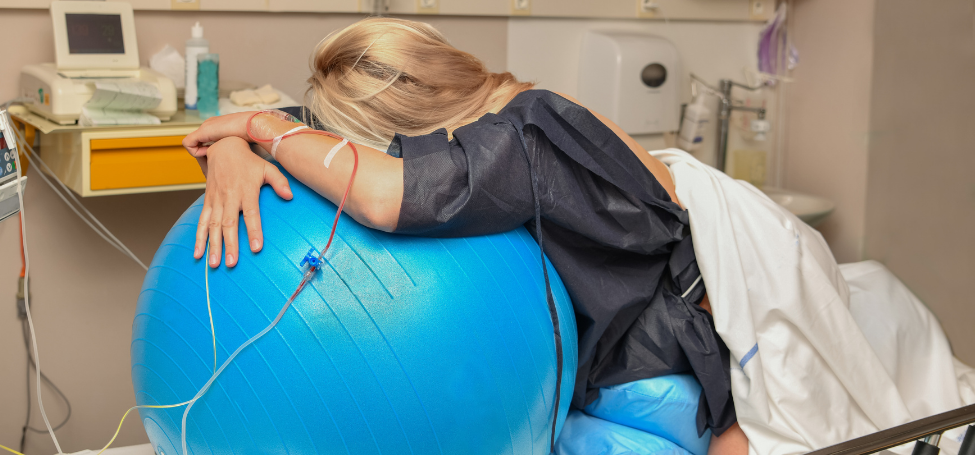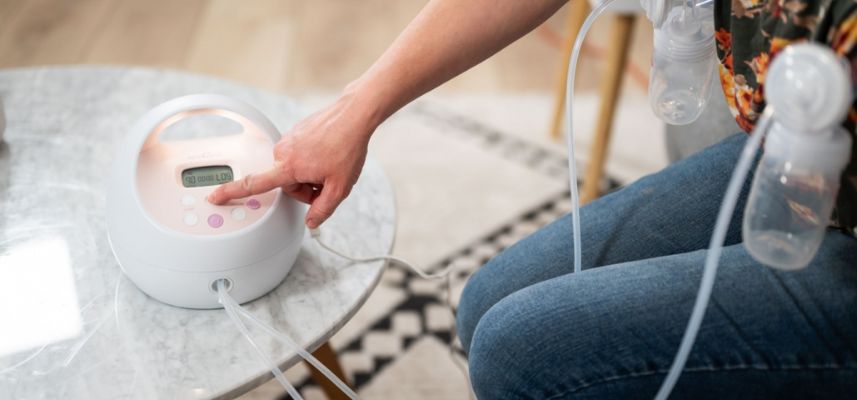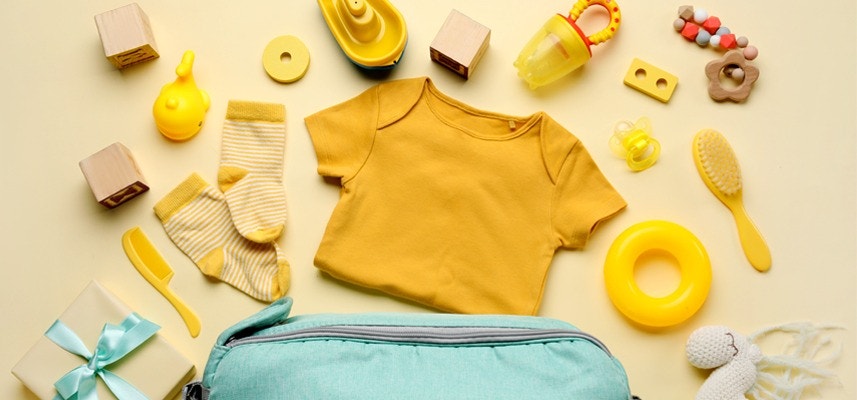After almost a year without a period, you might be wondering when Aunt Flo is going to drop in. Will she call ahead and let you know she’s coming, or will she just show up unannounced? Will your usual tampon/pad/cup routine do the trick, or should you stock up on something different? From cramps to cups, things might be different after pregnancy and birth. Let’s take a look at some of the most common questions about postpartum periods and offer a few solutions along the way.
What’s the Timing?
Postpartum bleeding (also known as “lochia”) may continue for several weeks after both vaginal deliveries and c-sections, with the most commonly reported range being 24-36 days. Usually, postpartum bleeding will gradually lessen over the weeks following delivery, though some women experience postpartum bleeding that stops for a few days and then starts again, and can last longer than the “average” of 3 weeks.
When it comes to the return of an actual period after giving birth, breastfeeding will impact the expected timing. Hormones that support lactation suppress ovulation, so if you’re exclusively breastfeeding it may take longer to see the return of your cycle. A 2015 review indicated that in exclusively breastfeeding women who are feeding on demand at least every 4-6 hours and not offering any supplementation, only 11.1-39.4% had a period at 6 months postpartum. In contrast, a 2011 review showed that in nonlactating women, the mean day of their first postpartum period ranged from approximately 6 to 13 weeks postpartum. Ovulation before 6 weeks post-birth was rare.
Most of us fall somewhere between these two extremes even with “exclusive” breastfeeding, as we may need to return to work, rely on pumping breast milk, or are lucky enough to enjoy a full night's sleep. For this reason, most women can anticipate their period returning between 6 weeks and 6 months postpartum, though many will fall outside of this range for various reasons.
Will My Hormones Feel Different?
Before you reach your first postpartum period, your hormones focus on supporting lactation if you’re breastfeeding, and on post-pregnancy regulation if you’re not. During that time, your body is in a menopause-like state, with reduced estrogen levels emitted from your ovaries. This can contribute to vaginal dryness in some, so don’t hesitate to use lubrication during intercourse or a daily personal lubricant to support your vulvar tissues.
Once lactation hormones decrease enough to allow for ovulation, your body will begin cycling again. It is normal to experience irregular periods within the first year postpartum as your hormones continue to regulate, particularly as long as you continue to breastfeed.
Some women will experience intense breast tenderness and potentially a drop in milk supply between ovulation and menstruation. This is due to the drop in blood calcium that occurs as part of a normal menstrual cycle. Lactation consultants may recommend an over-the-counter calcium and magnesium combination supplement between ovulation and the start of your period if the drop in milk supply is problematic. Talk to your healthcare provider or a lactation consultant to make a plan that’s right for you.
Will My Flow Be Heavier? What About Cramps?
Most women will find that their period regulates over time and returns to their normal flow, though some may find that their period is heavier or lighter post-baby. Heavier periods may be due to a uterine cavity that has stretched out to house your baby and has therefore increased its capacity to build a robust uterine lining each month.
It’s also difficult to predict how your cramps will or won’t change. The uterus stretches and shifts during pregnancy and birth; you may find that the big stretch has helped it relax and your cramps may be less intense. On the other hand, some women find that structural or hormonal changes impact how they feel each month – for better or worse.
If you’re experiencing unusually heavy, light, or uncomfortable periods, speak to your healthcare provider or OB/GYN to discuss potential strategies for relief.
Will My Pre-Pregnancy Absorption Strategies Still Work?
With pregnancy and birth, pelvic organs get shifted around and may sit slightly lower in the vaginal canal than before. The vaginal canal itself stretches during birth, and there may be scar tissue at the perineum or the abdomen. Though some women find that the cups or tampons they used before pregnancy still work just fine, others will find that their old standby items are uncomfortable or less effective than before.
Many women find themselves back at the drawing board with period management based on their physical changes in their postpartum anatomy and flow. If you’re a cup or a disc user, you may need to try a few different sizes and styles to find one that works well for you. The website putacupinit.com may be a useful tool to guide you through the process of finding a cup that's right for you.
If you usually prefer tampons, you may need to try different sizes or styles of applicators. For example, someone with a slight pelvic organ prolapse may need to insert the tampon higher into the vaginal canal than before, and someone with perineal scar tissue may need to switch to a smooth plastic applicator to avoid irritation. Above all, tampons and cups should not feel painful or uncomfortable. If you’re struggling, talk to your healthcare provider or a pelvic health physical therapist to help troubleshoot and optimize your strategy for your body.
External absorption methods like pads or period panties are also excellent options, particularly if you don’t feel ready to insert anything up there or you’re having discomfort. Pads are always the good old standby, though they can feel bulky. Period panties are becoming more widely available at all price points, and are designed to be absorbent, low-profile, and comfortable.
Not Sure if It’s “Normal”?
You know your body better than anyone. If you’re noticing anything concerning about your postpartum period, speak to your healthcare provider for medical advice. Things might be slightly different after carrying a baby, but they shouldn’t feel out of control. Don’t hesitate to get the support you need to stay comfortable and healthy in your postpartum body.










